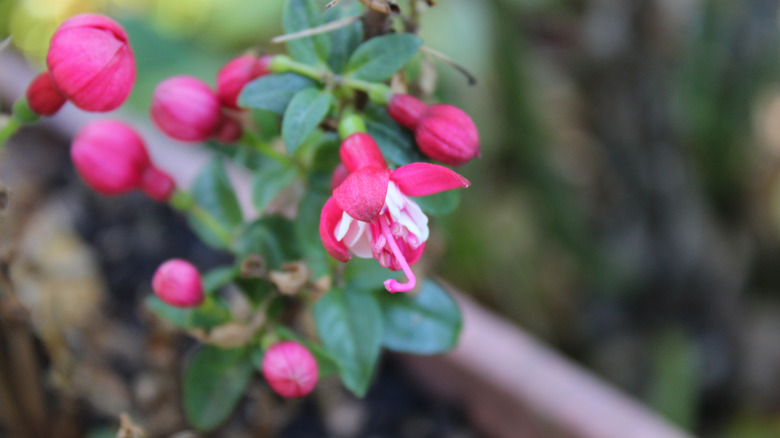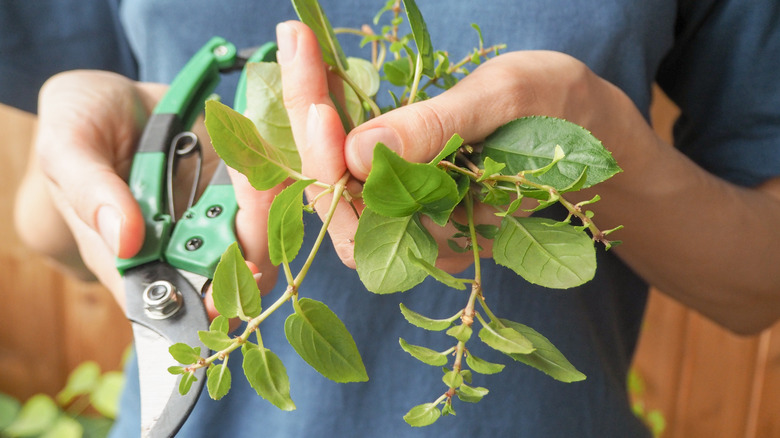It's Not Too Late! There's Still Time To Propagate Fuchsias Before Fall Ends
You've been smart with your fuchsia plant. You didn't let this flowering perennial beauty die, because you brought it indoors for the freezin' season. Part of prepping this pollinator-magnet for overwintering is giving it a hefty trimming. Even if your winters don't dip below 32 degrees Fahrenheit, ones that dwell outdoors year-round need some snipping for dormancy.
All of those cuttings need not rot in your compost. Fall is a great time to root new fuchsias, so save the cuttings for propagation. Plus, cuttings aren't the only way for your fuchsia to reproduce. You can also divide their rhizomes in late fall or winter for instant additions to next year's plantscape. The Old Farmer's Almanac shares that fall-rooted fuchsia cuttings bloom more quickly than spring-cut ones, so there's even more to look forward to! If you're preparing your plant to overwinter at the same time, you'll need to cut back all of the growth anyway. Why not pick out the healthiest specimens among them to grow some more of this stunningly beautiful plant?
Propagate fuchsia in fall by cuttings or division
To overwinter fuchsia plants, cut away the green and red stems and leaves so that only the tan-colored woody stems remain. Choose the healthiest-looking stems to propagate; the best candidates are 4-inch pieces that hold growing tips and several leaves. Dip their cut ends in rooting hormone. If you don't have any, cinnamon can be used as a rooting hormone. Plant them in a tray or pot filled with sand, vermiculite, perlite, or sphagnum moss. Roots should appear in about two weeks if you keep the cuttings in a space that stays in the mid-70s Fahrenheit, but they will also put out roots — just more slowly — in spaces kept in the 60s.
Propagating plants by rhizome or root division can be a bit intimidating, but fall is prime time to do this with the right care. If your potted fuchsia is looking a bit cramped in its home, it's time to divide. Please leave ground-dwelling fuchsias alone if they are at least 4 feet tall. Dividing them can actually be a death sentence. Snip away about ⅓ of the foliage once the plant has finished blooming. Uproot the plant, and gently shake excess dirt from the roots. Don't cringe, but you'll be cutting into the plant with a clean garden knife or shears. Slice the entire plant and its rhizomes in half, and repot both halves.

